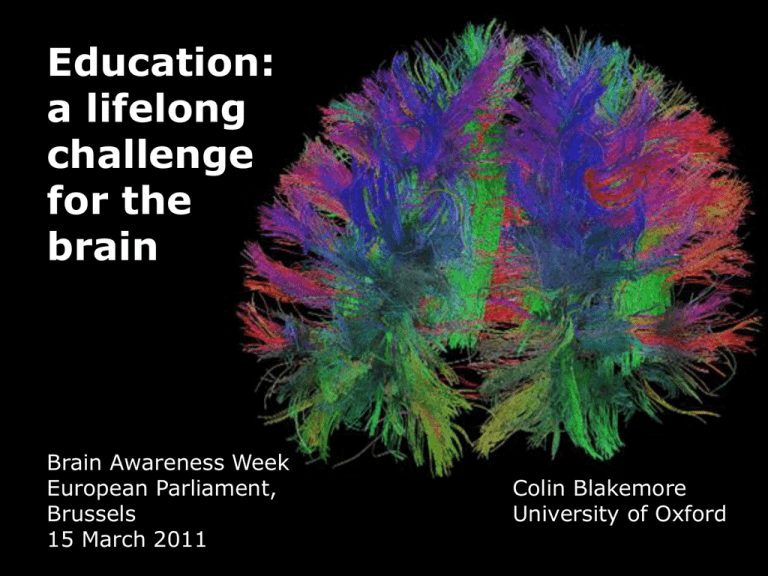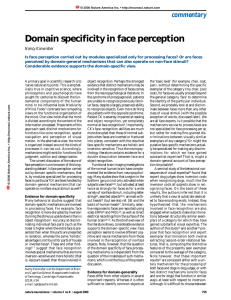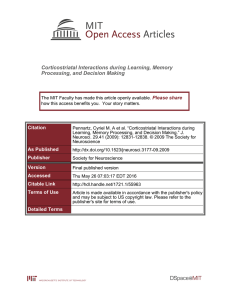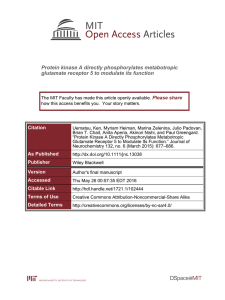Functional Magnetic Resonance Imaging
advertisement

Education: a lifelong challenge for the brain Brain Awareness Week European Parliament, Brussels 15 March 2011 Colin Blakemore University of Oxford Functional Magnetic Resonance Imaging (FMRIB Centre, Oxford) Basic organization of the brain in largely genetically determined Expansion of the cortex during evolution has generated space for additional specialized areas S1 S2 A1 V1 V2 Krubitzer, L & Kahn, DM (2003) Prog Neurobiol Encephalization Quotient The exceptional brain of modern humans Homo sapiens ● Old World monkeys □ New World monkeys + Apes Hominids: 1 aferensis 2 africanus 3 boisei 4 robustus 5 habilis 6 erectus Martin, RD (1984) Body size, brain size and feeding strategies Big brains are clever brains... ...but not without knowledge and experience Humans have the capacity to reflect on the past and anticipate ...sometimes the future... Primary areas for sensation and movement … and for spoken language Broca’s area Wernicke’s area Separate processing of form and motion V5/MT V1, V2 Face-selective and object-selective areas Faces Objects Objects (parahippocampal gyrus) Faces (fusiform gyrus) Verbs Visual Contrast & Form Colin Clifford, University of Sydney Bedny, M et al. (2008) J Neurosci. 28: 11347 David Hubel & Torsten Wiesel Activity-dependent plasticity in sensory cortex Blakemore, Sengpiel,CF&etCooper, al (1999) GF (1970) Nature Nature Neurosci 228:2:477 727 mGluR5 PLCβ1 mGluR5 PLC-β1 knockout knockout Cortical cells Control Control Hannan, AJ et al (2001) Nature Neurosci 4: 282 The hippocampus: essential for personal memories Learning to navigate Eleanor Maguire, UCL Right posterior hippocampus enlarges Touch takes over visual areas in the blind VISUAL MOTION NORMAL, SIGHTED LATEONSET BLIND Goyal, MS et al (2006) NeuroReport 17: 1381 TACTILE MOTION VIEWING FACES TOUCHING FACES Changes in the brain after stroke Using affected hand Additional areas of brain activity THERAPY Using normal hand Johansen-Berg, H, Matthews, PM et al, FMRIB Centre, Oxford Mutations make mice with big brains Changing the proportion of stem cells re-entering the cell cycle Reducing cell death Kuida, K et al (1998) Cell 94: 325 Chenn, A & Walsh, CA (2002) Science 297; 365










